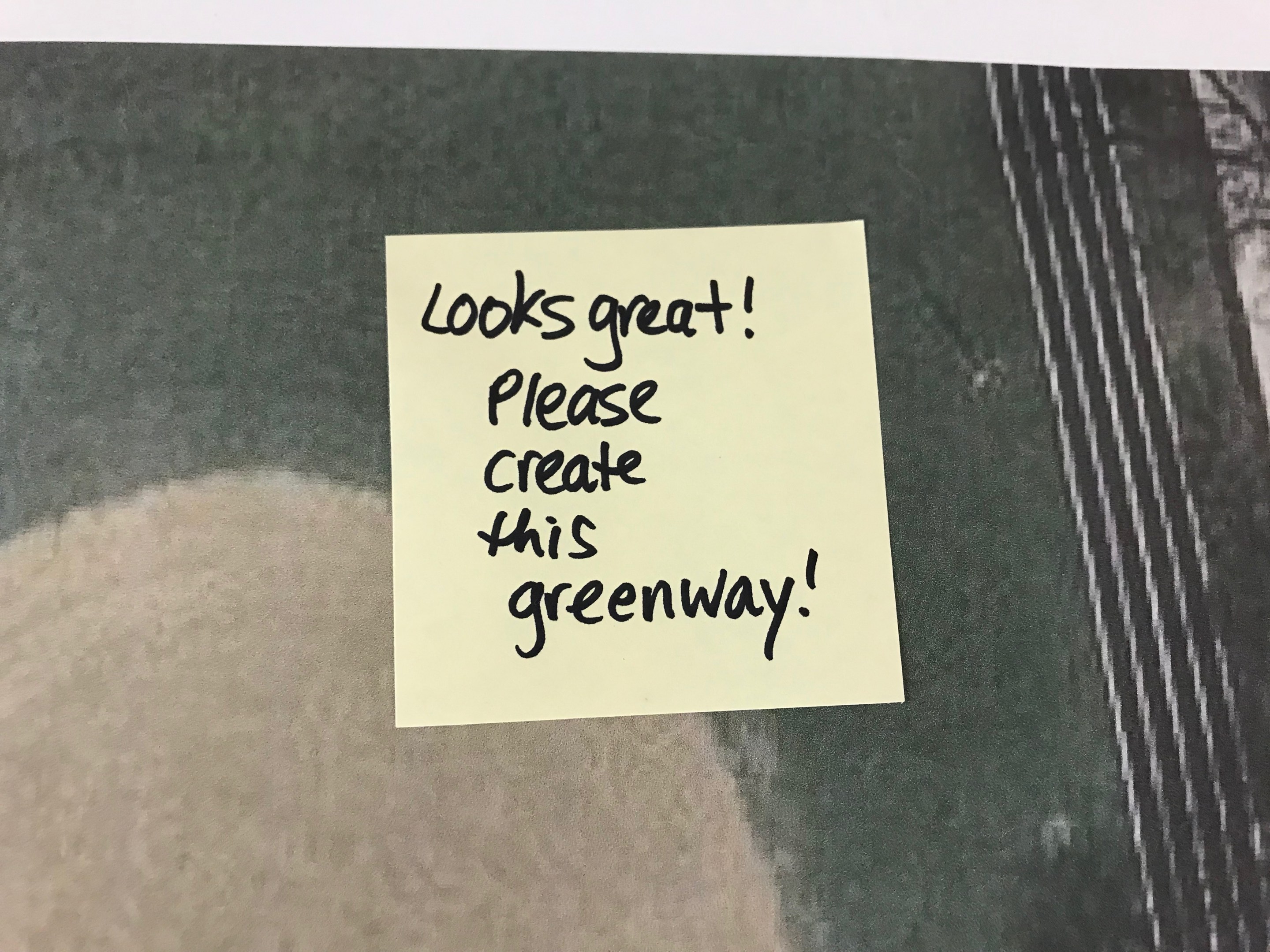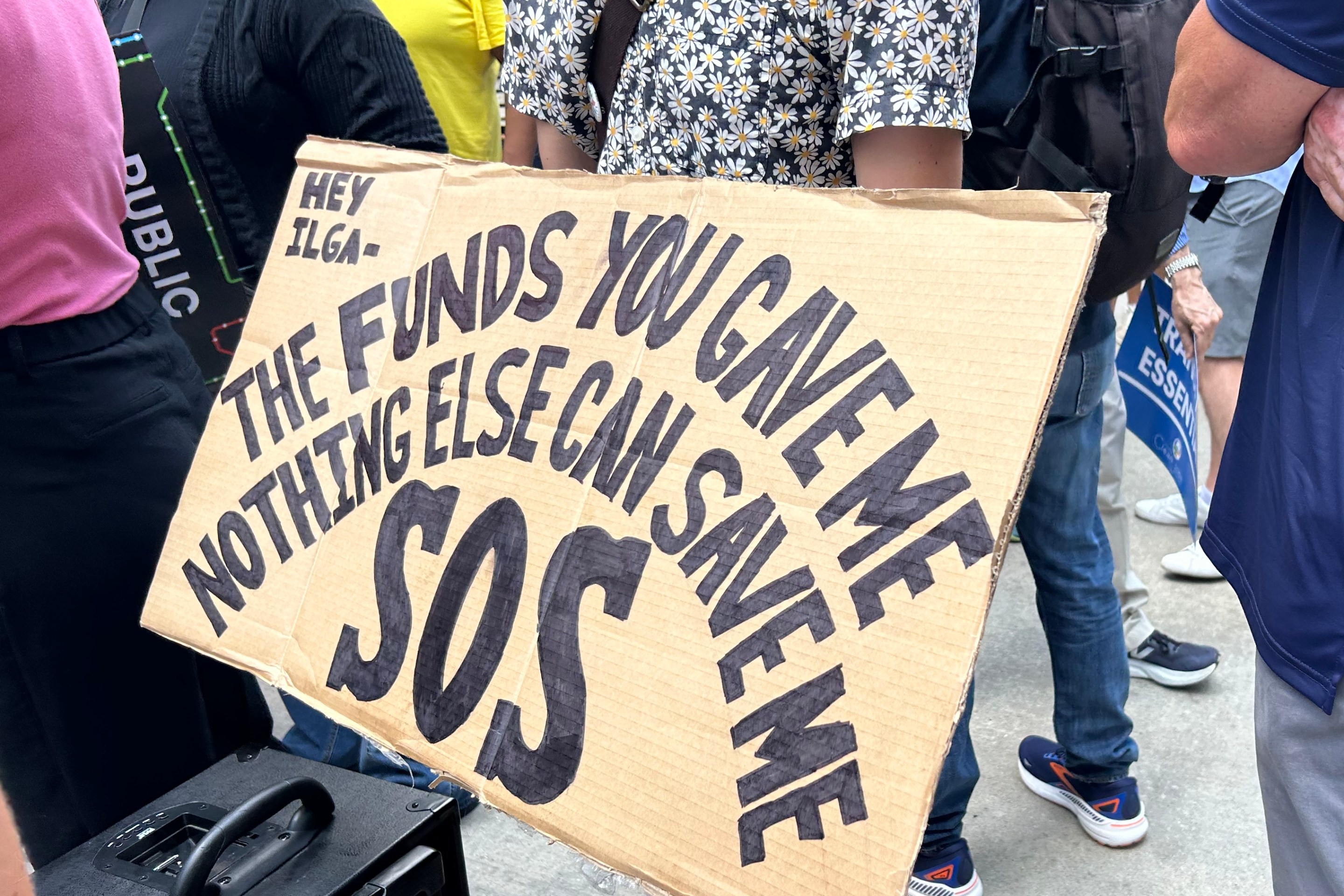Earlier this month, a 47th Ward rep told me that he was hopeful that the city's plan to extend the existing Leland Avenue neighborhood greenway west from Uptown into Lincoln Square wouldn't see the same backlash from neighbors that the Dickens Avenue greenway proposal has faced in Lincoln Park. That's because, unlike in Lincoln Park, the 47th Ward and the Chicago Department of Transportation had already done plenty of outreach to neighborhood groups along the corridor before the first public meeting on the project. He added that residents of Lincoln Square may be a little more hip to the benefits of bikeways than their Lincoln Park counterparts.
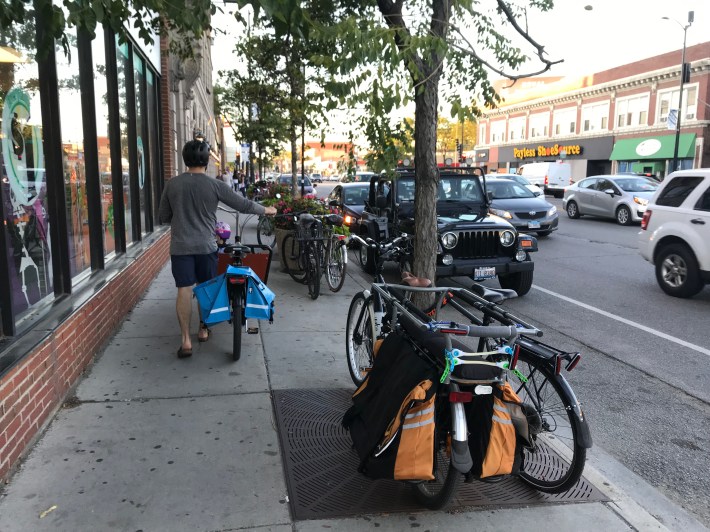
That prediction seemed to come true at last night's Leland Greenway hearing at DANK Haus German American Cultural Center, where there was relatively little obvious opposition to the project. One promising sign was the large number of bikes parked outside the building, including several cargo bikes for hauling children. Inside the meeting there were a number of families with (very well-behaved) kids, including members of the Chicago Family Biking meetup group, who showed up in force to the most recent Dickens hearing. There were dozens of other residents present, perhaps close to 100 total, but if many of them were opposed to the project, they weren't vocal in their distaste for the plan.
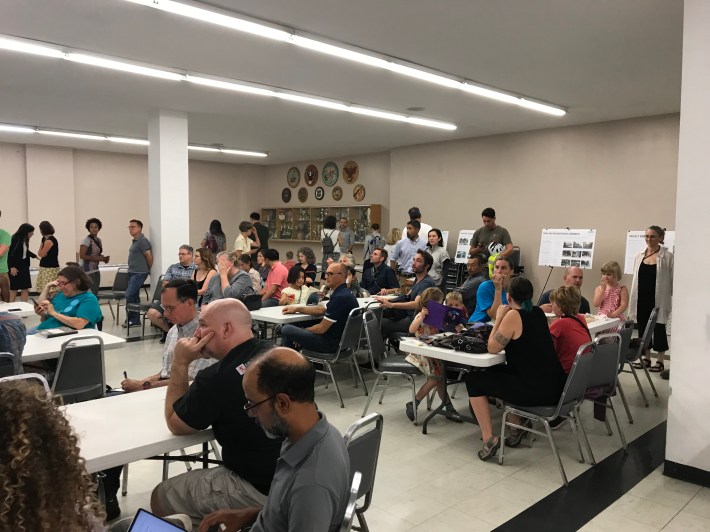
As it stands, Leland is already an excellent low-stress eastbound all the way from the Chicago River, about 2900 West, and the adjacent North Shore Channel Trail. Motorized traffic is very light, and there are stoplights at all major street crossings. However, there are one-way eastbound stretches between Clark Sreet and Damen Avenue, and Western Avenue and the river. The proposed extension would add contraflow bike lanes on these one-way segments to legalize two-way cycling. The project would also include curb bump-outs to shorten pedestrian crossing distances, and bike-friendly speed humps.
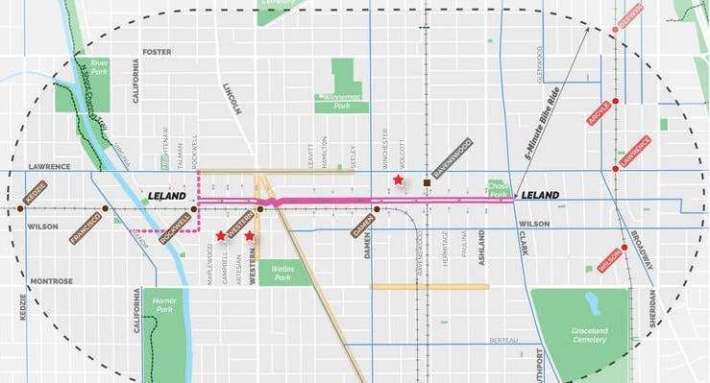
47th Ward alderman Matt Martin and 40th ward alderman Andre Vasquez, whose district includes the western third of the project area, opened the meeting with comments. In keeping with the family-friendly vibe of the hearing, Martin carried his new baby in a sling on his chest as he spoke. He noted that many ward residents are concerned about climate change and would like to help contribute to addressing the problem by driving less. "This project gives people an opportunity to live their values."
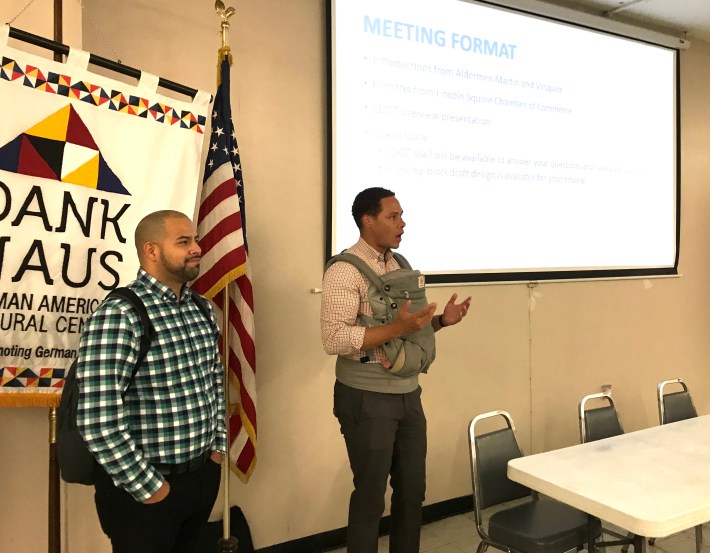
David Smith, manager of CDOT's bike and pedestrian program discussed the details of the proposal, noting that 80 percent of the project cost would be paid for with federal transportation funds, but due to the funding cycle, installation wouldn't occur until 2021. He noted that Leland is already a popular street for biking, which sees 250 bike trips a day, or about 15 percent of all trips on the street. Some of those people are currently riding contraflow, "not because they're scofflaws trying to break the law or be rebellious," but because they don't feel comfortable riding on busier streets, Smith said. He noted that adding the contraflow lanes would legalize and organize this behavior.
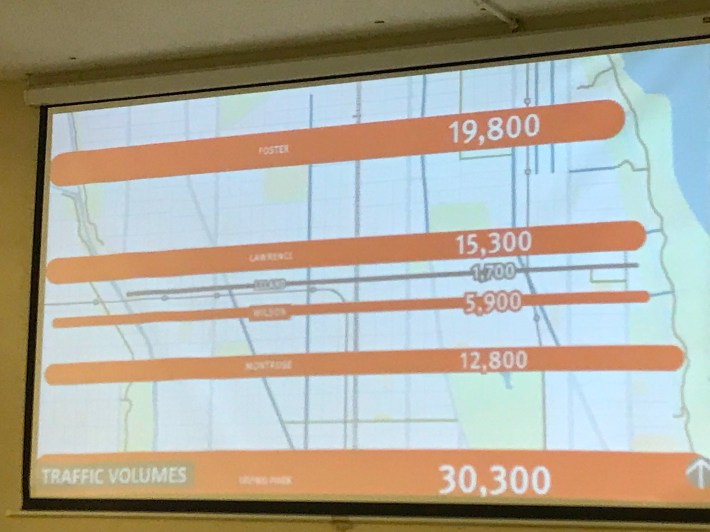
While it's true that Wilson and Lawrence Avenue, one block south and north of Leland, respectively, are options for westbound cycling, Smith noted that they have much more car traffic. While Wilson sees 5,900 motor vehicle trips a day and Lawrence carries 15,300 vehicles daily, Leland sees a mere 1,700 vehicles a day, making it a serene alternative. Moreover, while CDOT counted 480 drivers breaking the speed limit on Lawrence during a 24-hour period, only one driver did so on Leland. He added that data shows that total crashes have decreased on older neighborhood greenways on Berteau and Wood streets, even though the amount of cycling has increased. (Oddly, he didn't share the specific numbers, which you can check out here.)
Smith added that the residents along the Leland corridor would be sure to make good use of the new bikeway. Cycling is the fastest growing transportation mode in Chicago, having increased by 55 percent citywide between 2010 and 2017. But cycling grew by a whopping 132 percent in the Census tracts along Leland during that time.
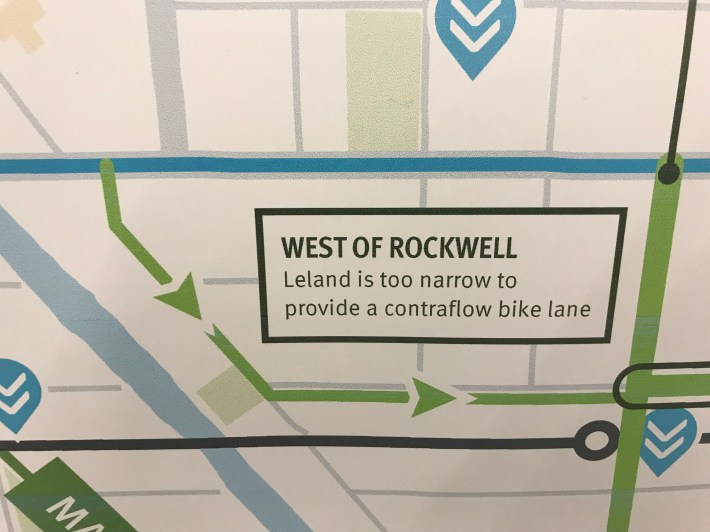
Smith clarified that at the west end of the corridor, westbound cyclists will either head north on Rockwell Street to Lawrence, where there's a stoplight for safe crossing to the westbound bike lane, or else head south on Rockwell to Wilson, where they can meet up with the Manor Avenue greenway. Although Virginia Avenue, just east of the river, is a good way for eastbound cyclists to access Leland, he said the section of Leland west of Rockwell is too narrow for a westbound contraflow lane.
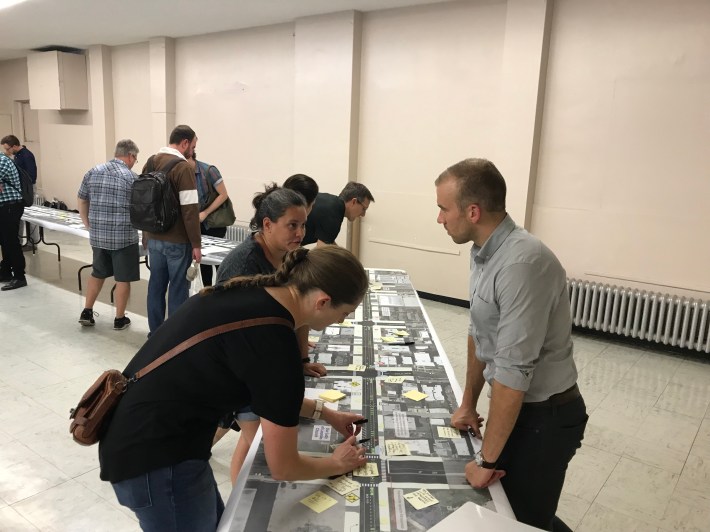
During the Dickens meetings, residents were given the opportunity to make public comments about the project, and many chose to grandstand, making the flat-earth argument that encouraging more cycling on the street would lead to a net reduction in safety, even though that project also involves traffic calming to discourage speeding by drivers and pedestrian infrastructure that makes crossing the street easier. At the Leland meeting, the city officials wisely opted to avoid that format, instead inviting residents to discuss their concerns one-on-one.
I did overhear one conversation between Smith and a neighbor who wanted the Leland project to include a sub-20-mph speed limit to ensure that cyclists don't ride too fast on the street. Smith politely informed her that 20 is the minimum speed limit currently allowed in Chicago. She later told me that she was worried about fast e-bikes and scooters on Leland, but generally thought that the greenway proposal makes sense.
Comments attendees were encouraged to leave comments on Post-Its on a large printout of the plan for the corridor. The remarks were generally positive, including "Looks great! Please build this greenway!" and "Yes! Do it!," with a few requests for fine tuning the design. The main issue cyclists seemed to have with the current proposal is the plan to locate the westbound bike lane on the east leg of the Leland/Western intersection between the left and right turn lanes for drivers. Although this layout was likely chosen to prevent right-turning drivers from "right-hooking" bike riders, many people do not feel comfortable pedaling between two lanes of moving cars. "Parents don't want kids stuck between cars!" one attendee noted.
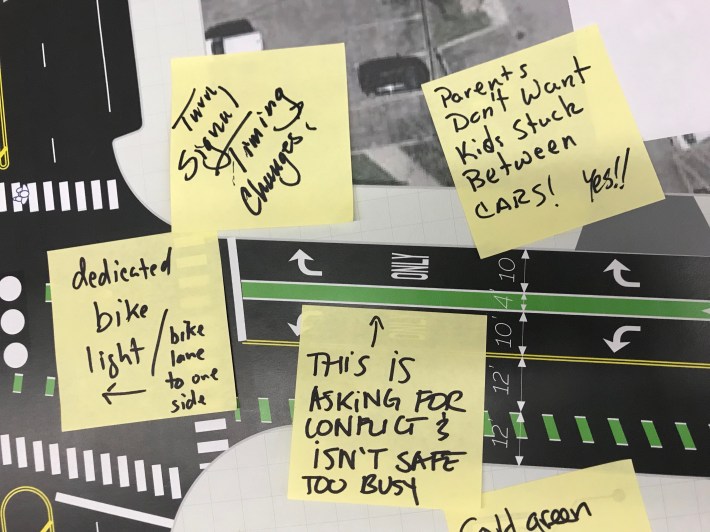
But local resident Aaron Greicius, a math professor at Northwestern University, said he was pleased with the outcome of the meeting overall. A member of the Greater Ravenswood Organization community group, he and other greenway fans launched an online petition to support the project, which has garnered 162 signatures so far. "We wanted to make sure that a good proposal didn't get derailed."
While it's likely that there are some neighbors who aren't happy with the plan, there doesn't seem to be an outspoken backlash against it, so hopefully Greicius' goal will be accomplished.
